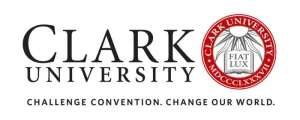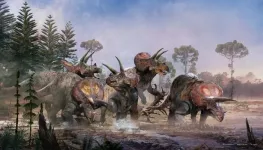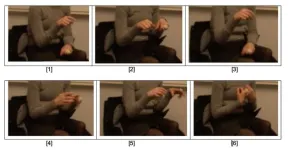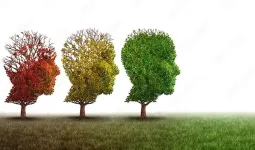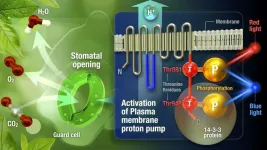(Press-News.org) Arlington, VA – As efforts to restore tree cover accelerate to help avoid runaway climate change, a new study highlights how restoring tree cover can, in some locations, heat up the Earth rather than cool it by affecting how much sunlight the surface reflects (i.e. “the albedo").
This new study by researchers at Clark University in the United States alongside scientists from The Nature Conservancy (TNC) and ETH-Zurich, published today in the journal Nature Communications, provides a global analysis of where restoration of tree cover is most effective at cooling the global climate system, considering not just the cooling from carbon storage but also the warming from decreased albedo.
The researchers provide a tool practitioners and land managers can use to determine just how much of a problem albedo is for any reforestation or afforestation project on the globe. The authors use these new maps to show that previously published ‘carbon-only’ estimates of the global climate mitigation potential of restoring trees worldwide provided significant overestimation, being anywhere from 20 to 81% too high.
Because comprehensive maps of the consequences of albedo change were not previously available, these carbon-only estimates tend to identify too many options in landscapes – particularly semi-arid settings and snowy, boreal regions – where changes in albedo would significantly offset, or even negate, the carbon-removing benefits provided by these trees.
“The balance of carbon storage versus albedo change that comes from restoring tree cover varies from place to place, but until now we didn’t have the tools to tell the good climate solutions from the bad,” says lead author Natalia Hasler, a research scientist at the George Perkins Marsh Institute at Clark University in Worcester, Massachusetts. “Our study aims to change that, providing the maps needed to empower smarter decisions while also ensuring that limited finance is directed at those locations where restoring tree cover can make the most positive difference as a natural climate solution.”
On the positive, the study also identifies locations within every biome on Earth where the climate mitigation benefits of tree-planting can be achieved. Better still, it also finds that most of the thousands of on-the-ground projects underway globally to restore tree cover are concentrated in these zones of greatest opportunity. Even in these locations, however, albedo changes are likely to offset the net climate benefit by at least 20 percent in around two-thirds of cases.
Elaborating further on the team’s findings, senior co-author Susan Cook-Patton – senior forest restoration scientist at TNC – explained: “We’ve addressed a significant research gap and gained a much more complete picture of how restoring tree cover can impact our global climate – both positively and also sometimes negatively. However, it’s important to remember that there are many other sound reasons to restore tree cover, even in locations where the climate benefits aren’t stellar: clean water, resilient food production, wildlife habitat, the list goes on... We’re simply calling on governments and land managers to more carefully integrate albedo in their environmental decision-making and are open-sourcing this robust new set of tools to help them do so.”
To read more about efforts to restore tree cover and to chart the full potential of nature to mitigate climate change, explore the recently launched Naturebase platform. Designed to support effective decision-making and high-integrity climate action, Naturebase integrates albedo into both its reforestation and avoided forest conversion estimates. Visit naturebase.org to learn more.
About Clark University
Founded in 1887, Clark University is a liberal arts-based research university that prepares its students to meet tomorrow's most daunting challenges and embrace its greatest opportunities. Through more than 45 undergraduate majors and major tracks, more than 30 advanced degree programs, a growing number of professional certificate programs and nationally recognized community partnerships, Clark fuses rigorous scholarship with authentic world and workplace experiences that empower our students to pursue lives and careers of meaning and consequence.
About Crowther Lab, ETH Zurich
Crowther Lab studies global ecosystems, generating knowledge to protect biodiversity and address climate change. The lab features an interdisciplinary team of scientists studying ecosystems at a global scale to understand the relationships between biodiversity and climate change. Its work is helping create the scientific foundation for ecosystem restoration, informing and empowering people to protect and restore Earth’s biodiversity to fight climate change and improve human well-being.
About The Nature Conservancy
The Nature Conservancy is a global conservation organization dedicated to conserving the lands and waters on which all life depends. Guided by science, we create innovative, on-the-ground solutions to our world’s toughest challenges so that nature and people can thrive together. We are tackling climate change, conserving lands, waters and oceans at an unprecedented scale, providing food and water sustainably and helping make cities more sustainable. Working in more than 70 countries and territories, we use a collaborative approach that engages local communities, governments, the private sector, and other partners. To learn more, visit nature.org or follow @nature_press on Twitter.
# # #
Notes for Editors
Hasler N., Williams C.A., Carrasco Denney V., Ellis P.W., Shrestha S., Terasaki Hart D.E., Wolff N.H., Yeo S., Crowther T.W., Werden L.K., Cook-Patton S.C. Accounting for albedo change to identify climate positive tree cover restoration. Nature Communications. https://www.nature.com/articles/10.1038/s41467-024-46577-1.
END
In a world inundated with a constant stream of new information—notifications, ads, emails, news—we often struggle to prevent our attention from being constantly hijacked by external events. But is it truly within our power to filter and select our perceptions? And why do we find ourselves so easily distracted?
“Exogenous attention, the cognitive process that allows a salient visual stimulus to impose itself on us, is automatic. When a colleague walks past our desk, our attention is diverted from our computer screen despite ourselves,” explains Tal Seidel Malkinson (University of Lorraine), ...
Actually, the team from Naturalis Biodiversity Center in the Netherlands was looking for a Tyrannosaurus, that summer of 2013 in Wyoming. Instead, they found a Triceratops: the famous dinosaur with the three horns and the large neck frill. And then they found another one. And another one. And more. The dig turned into a project that would last for more than ten years.
All in all, they dug up 1200 bones and bone fragments, of at least five individuals. A team of professional and volunteer paleontologists ...
Research Highlights:
Nontraditional risk factors for stroke were significantly associated with the development of strokes in adults younger than ages 35 to 45.
Migraine was the most important nontraditional risk factor for stroke among both men and women, according to the study of adults in Colorado.
Embargoed until 4 a.m. CT/5 a.m. ET Tuesday, March 26, 2024
DALLAS, March 26, 2024 — Adults younger than 35- to 45-years old may have a higher risk of developing a stroke from nontraditional risk factors ...
Bethesda, MD (March 26, 2024) – Modeling studies and expert consensus published today in the journals Gastroenterology and Clinical Gastroenterology and Hepatology shed new light on the promise and peril of liquid biopsy (blood tests) for colorectal cancer (CRC) screening that are currently in development.
“Based on their current characteristics, blood tests should not be recommended to replace established colorectal cancer screening tests, since blood tests are neither as effective or cost-effective, ...
One in three birders experiences accessibility challenges to participation in birding, according to Virginia Tech researchers Emily Sinkular and Ashley Dayer.
“I like to think of our research as blending together two previously unconnected fields: disability studies and wildlife recreation,” said Sinkular, a Ph.D. student and lead author of the study published March 26 in the journal Human Dimensions and Wildlife. “There’s been quite a lot of research on disability and lots of research on birding, but very few researchers have combined these two topics together.”
The ...
A global collaborative research group comprising 131 researchers from 105 laboratories across seven countries announces a groundbreaking research paper submitted to eLife. Titled "Large-scale Animal Model Study Uncovers Altered Brain pH and Lactate Levels as a Transdiagnostic Endophenotype of Neuropsychiatric Disorders Involving Cognitive Impairment," the study identifies brain energy metabolism dysfunction leading to altered pH and lactate levels as common hallmarks in numerous animal models of neuropsychiatric and neurodegenerative disorders, such as intellectual disability, autism spectrum disorders, schizophrenia, bipolar disorder, depressive disorders, and Alzheimer’s ...
An orange dwarf star has yielded the tiniest ‘starquakes’ ever recorded, measured by an international team of scientists.
Named Epsilon Indi, the star is the smallest and coolest dwarf star yet observed with solar-like oscillations – “starquakes” like those shown by the Sun. These oscillations provide indirect glimpses of stellar interiors – just as earthquakes tell us about Earth's interior – and so are important sources of information about the makeup of the star.
The measurements ...
When we talk, we often use our hands in addition to words. Gesturing is a phenomenon that has been observed across languages and cultures. Some cultures are typically thought to use more gestures than others.
To find out if the deeply rooted stereotype of Italians gesturing more than other cultures is true, researchers in Sweden have examined the differences in gesture rate and function between Italians and Swedes who were telling a story to a friend.
“We show that Italians do gesture more than Swedes, which was expected,” ...
Researchers at the University of Leeds and Lancaster University in the UK have identified a new potential target for the treatment of Alzheimer’s disease – PDE4B.
Alzheimer's disease is the leading cause of dementia and disability in old age. As the number of people diagnosed with Alzheimer’s disease is on the increase, new treatments are urgently needed to improve the quality of life for people living with the disease.
PDE4B is an enzyme inside cells that breaks down a molecule known as cyclic AMP, which regulates a range of cellular processes. Based on an Australian study that identified the ...
Scientists from Nagoya University have discovered a novel regulatory mechanism that controls the opening of stomata in plants, which is crucial for harnessing solar energy through photosynthesis. The team uncovered the role of phosphorylation at the 881st threonine residue (Thr881) of the plasma membrane proton pump in response to red and blue light in this process. This research opens up possibilities for manipulating plant physiology in specific ways, benefiting agriculture and the environment. The researchers reported their findings in Nature Communications.
“This phosphorylation event, ...
